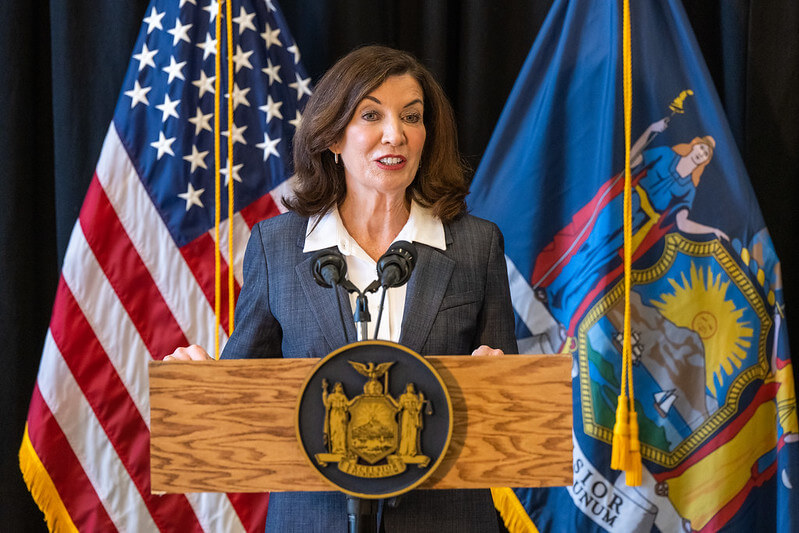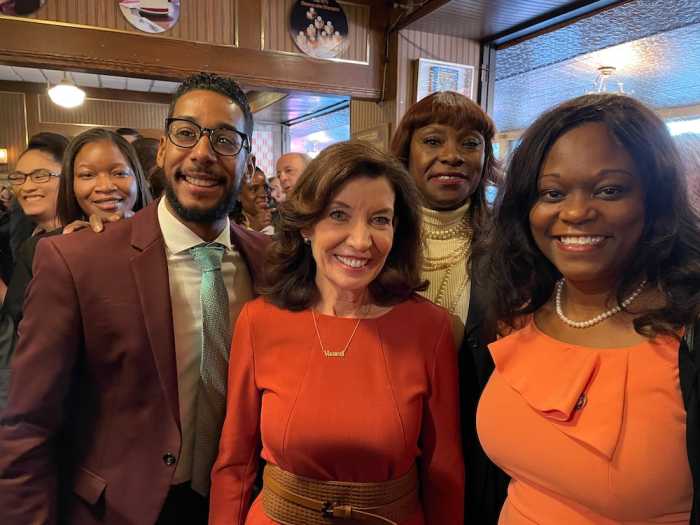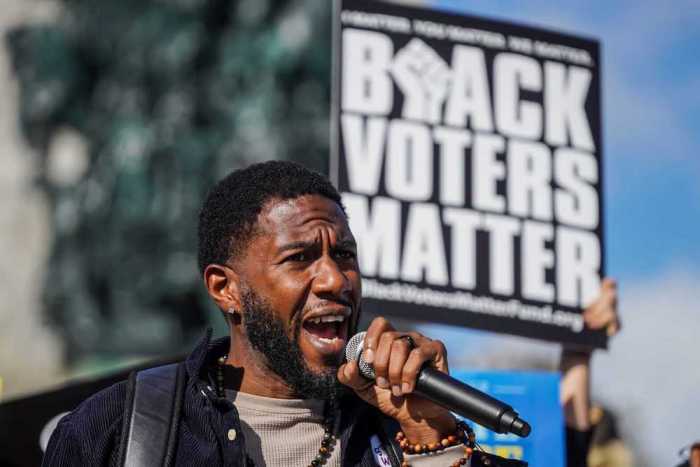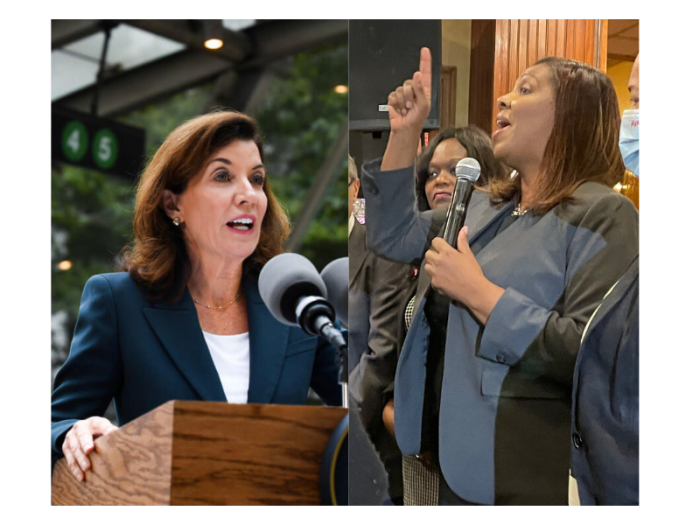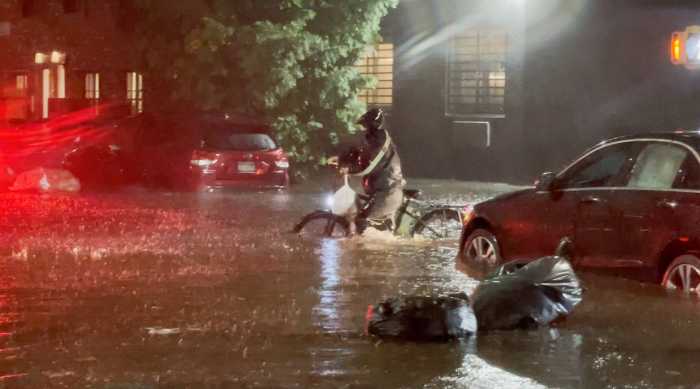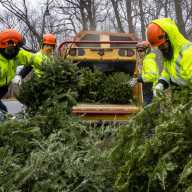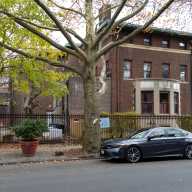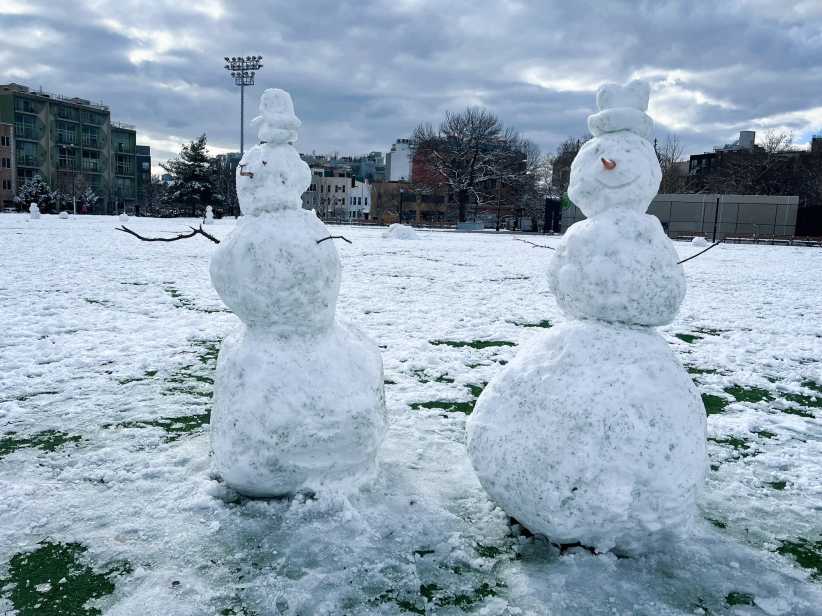Midwives and activists are asking the governor to sign a bill that would effectively legalize midwife-led birth centers in New York State before the ball drops tonight and renders the unsigned law useless.
In 2016, the state government voted to amend public health laws to legalize freestanding, midwife-led birth centers. But the regulations imposed on the facilities are so restrictive that none have opened since the initial bill was signed.
For three years after that bill passed, state agencies worked on the rules birth centers would abide by, said Whitney Hall, a Rhinebeck-based midwife, at a virtual rally last week. Last year, the COVID-19 Maternity Task Force finally pushed the state’s Department of Health to create a licensing procedure for the facilities.
“They made the midwifery birth center basically do the same certificate and need process as a multimillion dollar hospital facility,” Hall explained. “Subsequently, we haven’t had a single birth center open in the state of New York, and they’re deaf to our pleas of, ‘You have to make this a different process for midwifery birth centers.”
Regulations too restrictive for new birth centers
Under current regulations, a Certificate of Need, including a public needs assessment that breaks down the demographics facility’s service area, the current and projected demand for the birth center’s services, and “an indication of whether the facility will serve all patients needing care” regardless of their ability or method to pay, must to be completed before an application for a birth center can be considered, said Trinisha Williams, a Brooklyn-based midwife and owner of Haven Midwifery, told Brooklyn Paper.
For she and her colleagues, the need is clear — there are only two freestanding birth centers in New York State, both in New York City, which has a population of nearly nine million people. The Jazz Birth Center in Manhattan was opened under emergency orders as an extension of the Brooklyn Birthing Center last year. The second, the New York Birthing Center in Bay Ridge, does not accept Medicaid, a common insurance option for pregnant people.
More pressing for Williams, who has been trying to open a birth center for eight years, is the state’s requirement that a birth center have a full year’s operating costs on hand when it opens.
“That, right there, for any business opening, is a hard stop, problematic issue,” she said.
The state also requires birth centers to adhere to the same requirements as hospitals for things like the location of doors and windows, she said, despite the fact that by law, the centers would be much smaller facilities. That makes it all the more difficult to find an appropriate commercial space.
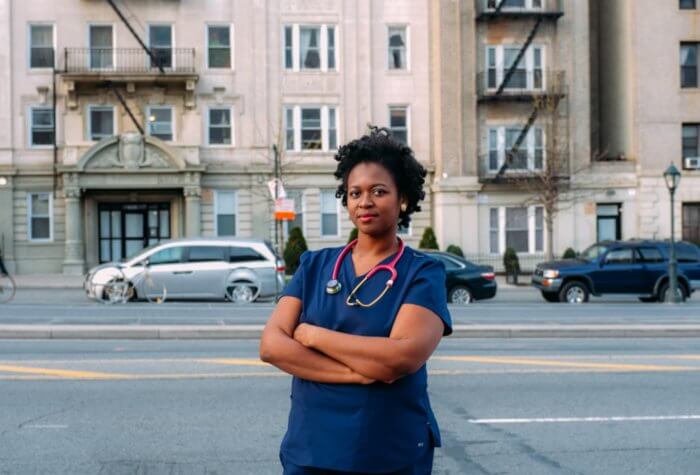
“We had, last year, at the beginning of the pandemic, put money down to start working with a particular commercial entity,” Williams said. “One of the challenges is that a commercial entity, once you sign the lease, they’re prepared for you to start utilizing the facility. That’s not what you can do with this current regulation.”
An applicant needs an address on the application form, she said. Once a location has been secured — with a signed lease, not as a prospective site — the application can be sent in.
It can take the Department of Health months to even pick up the application, Williams said, and more time to inspect the facility, recommend changes, and return to approve the modifications once they’re finished. All the while, the birth center cannot function, and the applicant is paying thousands of dollars per month in rent.
When the Elizabeth Seton Childbearing Center in Manhattan closed in 2003, former employees and activists banded together to form Friends of the Birth Center, hoping to open a freestanding birth center to replace Elizabeth Seton. But high costs were too much, Williams said.
“They literally expended all the money that they had raised, about $2 million, on just trying to keep the facility open while going through the regulations,” she said.
Williams has had to give up two commercial leases over the past eight years of trying to get applications through.
“I’m a nonprofit, I’m a midwife, midwives in New York we’re not entrepreneurs, at best we make $80,000 a year,” she said. “Where am I going to get almost $80,000 just for the facility to sit there?”
Back to the drawing board
The bill sitting on Gov. Kathy Hochul’s desk amends public health law again to adopt guidelines issued by the national Commission for the Accreditation of Birth Centers, a national organization run and trusted by midwives all over the country.
“It’s transparent, it is efficient, it is cheaper, and the CABC can get it done for us in a way that the New York State Department of Health has not been able to do,” Hall said. “And that is the point of the bill, to get the New York State Department of health to use national accreditation, which is evidence-based, to be our licensing procedure.”
Midwives did help develop the 2016 bill, Williams said, but didn’t realize how limiting the regulations would remain.
“We were granted the ability to be in charge of the facility, but they kept the rules exactly the same,” she said. “We just thought, OK, it’s midwifery-led, you’ll make a whole new set of rules. No, you use the exact same rules that you would have used for other facilities, and then some.”
According to the text of the bill that passed in the state senate, the bill is largely based on the state regulations for office-based surgery centers.
Brooklyn Assemblymember Phara Souffrant-Forrest, who gave birth to a son earlier this year, said she learned quickly in her birthing classes that the “twists and turns” of a healthy labor don’t require much intervention.
“I wish I could tell legislators, for the most part, we don’t need hospitals,” Souffrant-Forrest said during the virtual rally. “We need centers that support the twisting and turning and that actually is just supporting the mommy, for the most part, and that it actually goes quite normal, and it’s OK.”
Why birth centers?
“Community-based birth,” or any birth occurring outside a hospital setting, gives people with low-risk pregnancies more options, Williams said. Many people worry that they will feel out of control of their birth if they’re in the hospital, where many feel coerced into medical interventions they don’t want to speed up labor and delivery.
A smaller care team at a birth center or home birth organization also means more intimate care during pregnancy, and a better chance that the birthing person will have met the midwife delivering their baby ahead of time, rather than being surprised with a brand new doctor if they go into labor unexpectedly.
Aside from being more comfortable, many people of color feel safer delivering outside of a hospital setting. The U.S. has a high maternal mortality rate in comparison with other “industrialized” countries, and Black women in New York have been found to be significantly more likely to die during pregnancy and childbirth than their white peers, and the deaths of women like Amber Rose Isaac and Sha-asia Semple have raised the alarm about the way Black patients are treated during pregnancy and childbirth.
Months after Isaac’s death, her partner, Bruce McIntyre, joined forces with midwife Myla Flores to raise money for a birth center in the northwest Bronx.
“Most of my clients come to me because I am a midwife of color, and they want to be taken care of by a midwife of color,” Williams said. “They’re concerned about what could happen. They’ve done their reading, they’ve done their research, and they say ‘This is what I’ve read, and this is what I understand to get around these issues, and I need a person of color to help support me in this birth and labor.’”
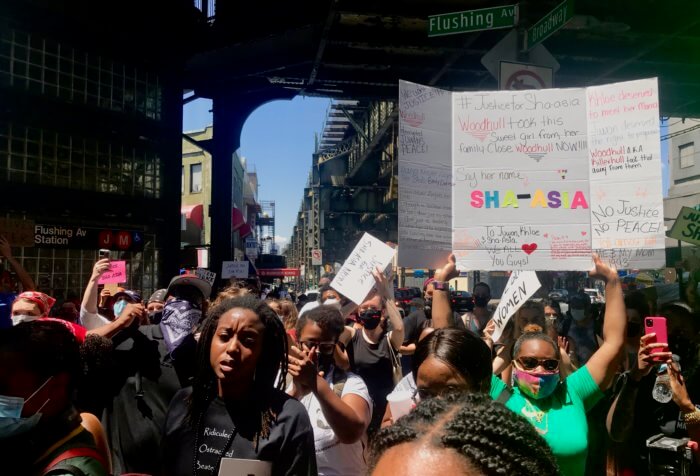
Williams decided last month that she’s going to pursue purchasing a building for her future birth center.
“When I did talk to the Small Business Administration in Brooklyn, when I told them, you know, what facility and what I was planning on doing, they were like ‘So who’s going to give you a $1.2 million commercial loan when you have no assets?’” Williams said. “I’m going to try my best. I know that the families that I serve want this type of facility.”
If the bill is signed in time, Williams said, there will still be more work to be done to amend laws and protect pregnant people, but a huge roadblock will have been removed. If it’s not, midwives will be back to square one.
“I’m hopeful that Gov. Hochul will pass this bill, she has about another 48 hours or so before the year is over,” Williams said. “If not, I mean, don’t get me wrong, the fight is not going to stop, it’s just going to make it a lot more challenging as we move forward.”


